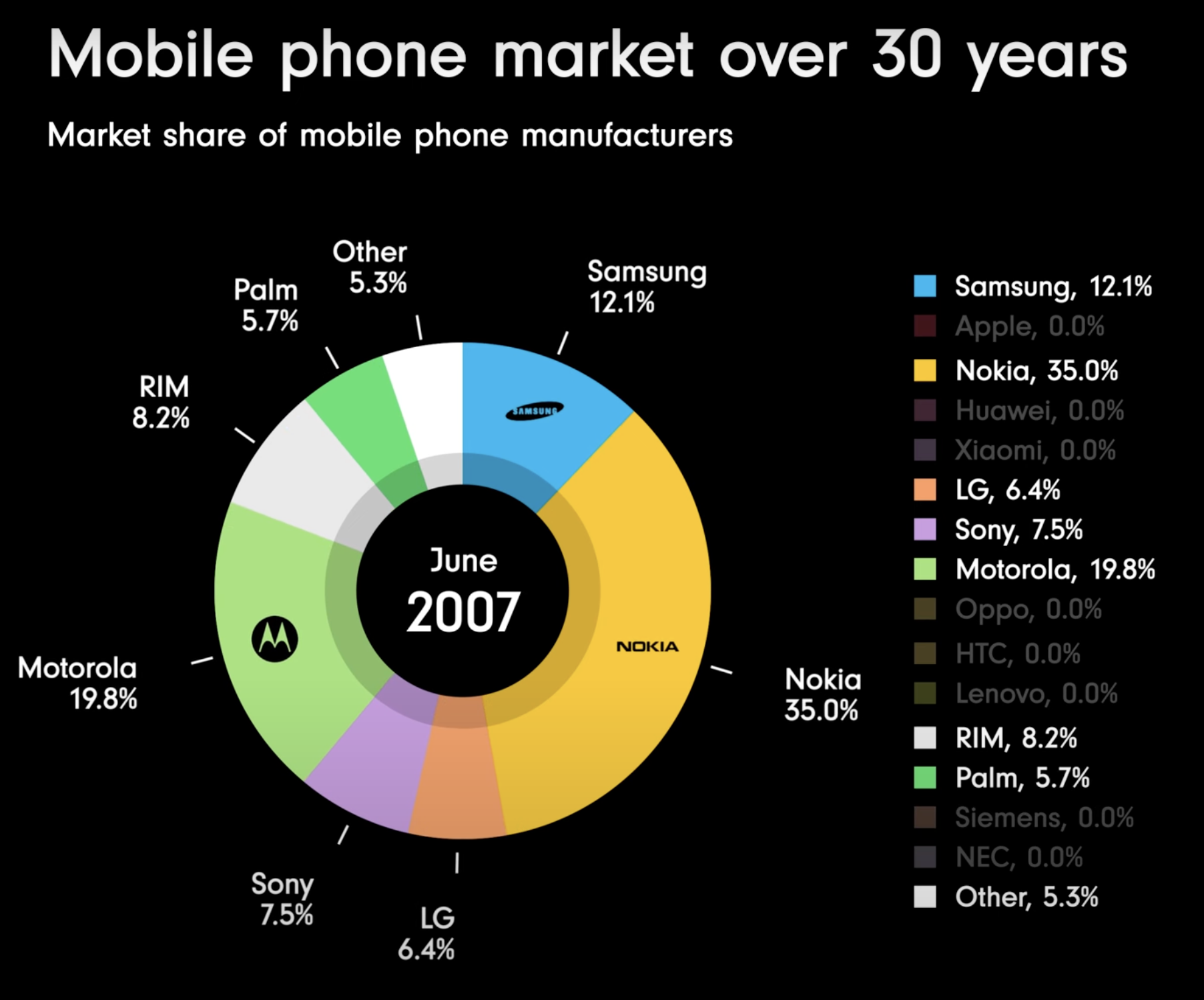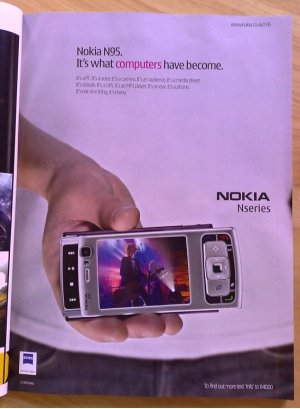Early design diary: in the shoes of a global brand leader
Since I attended the French wargaming studies conference a few weeks ago, I started toying with an immersive training exercise (aka serious game) idea.
Right now I only have a few early notes I’m sharing here, though I want to get to an early prototype I could test live with participants who could provide feedback relative soon. I’m guessing in the next three months.
The following are very early thoughts, all likely to change in part or completely.
The goal of the experience would be for a group of participants, maybe six people or so, to learn about making business and marketing choices as a global market leader faced with a massive competitive challenge.
Apple’s iPhone was announced early in 2007, and launched in June that same year. At the time, Nokia was the global mobile phone market leader, and had been since before 2000, and arguably since mobile phones were really something nearly anyone and everyone could have in their pocket (there could be something to check there for Motorola, some other time).
2007 is also interesting because it is a record setting year: over 1 billion mobile phones were sold for the first time that year.
According to this data visualisation video by James Eagle (citing Gartner, IDC and financial filings as sources), in June 2007 Nokia was the market leader with 35% and they were already challenged by other brands like Motorola, Samsung, Sony Ericsson, LG and RIM (Blackberry).
It took six years for Apple’s iPhone to become the global leading brand taking over from Nokia in 2013, with Samsung near third.
Lots happened in those brief six years in the mobile phone / smartphone market, including Blackberry doubling their market share from about eight to 16% and falling back to under four percent to disappear shortly after.
It seems like a potentially fascinating period of time to explore further, and for participants to take on being (playing, in a way) the global brands threatened by and quickly losing ground to Apple’s brand new iPhone.
Nokia N95 flagship phone advert in 2007
Maybe those six years could be six rounds in the experience. I still have much to learn about recreational and military or business wargames, though one thing I figured is they are traditionally reliant on simulating many historical real life factors, which in turn tend to mean more complex games to learn and play.
I know more about the playing and designs of roleplaying and board games. I imagine to make the experience easy to grasp and be valuable in a short amount of time, like two or maybe three hours, then it will probably be best to sacrifice some ‘simulated realism’ and abstracting some complexities to be easier to learn, while still offering meaningful and difficult choices. There would still be interesting and meaningful information from what actually happened, however some things would be simplified and abstracted.
Instinctively, I want to look into ‘Euro’ style board game designs, which tend to favor resource management mechanics.
Resources could maybe be abstracted under the four Ps of marketing. Participants would have choices to make, around questions such as:
Product e.g. Which features or technology to focus on for the following year’s flagship model (in order to compete with the iPhone)?
Pricing e.g. Adapt or change the pricing strategy?
Place (distribution) e.g. Should something change in where and how people come across and purchase mobile phones?
Promotion (communications) e.g. Change the communications media mix, or message, what the brand stands for?
Of course, they would not be able to do everything, they would have to determine a strategy and achieve it with a series of tactics.
I am imagining participants being in teams, maybe pairs for different brands, and a facilitator / moderator taking the role of the outside world events and reactions to their actions. Discussions could take place in the middle of the experience in order to share either more background, and/or marketing and branding principles.
I realize this is all still pretty vague. My next steps are to add more questions to refine the design objectives, set some time aside to keep researching the time period for mobile phones (I used to work on Sony Ericsson back then so I might still have a few things, though I think much was lost along with an external hard drive years ago), and identify a few game mechanics I will want to test out.



